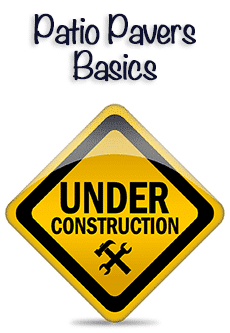 Pavers have been used for several years to improve the comfort of the exterior of homes, and for creating places for memorable get-togethers for families and friends. These do-it-yourself landscaping materials are also used for laying pool surrounds, paths, steps, driveways and patios around the yard.
Pavers have been used for several years to improve the comfort of the exterior of homes, and for creating places for memorable get-togethers for families and friends. These do-it-yourself landscaping materials are also used for laying pool surrounds, paths, steps, driveways and patios around the yard.
Typically made from stone, clay or concrete, pavers can also be made of recyclable materials also known as composite pavers. These types of pavers are extremely versatile and can be dyed to literally any color, and can even be molded to resemble flagstone, cobblestone, clay bricks, etc. In most cases they are available in a rectangular shape, but other shapes such as interlocking, hexagons and irregular shapes are also available.
Composite Patio Pavers
Crafted from flat tires and used plastics, composite pavers use less energy and release less carbon during the manufacturing process compared to brick and concrete pavers. These types of patio pavers are extremely lightweight, which makes them a great choice for resurfacing wooden decks and green roofs. In addition, composite pavers are able to cut easily when mated with circular saws of several types.
Brick Pavers
Made from clay, these pavers are fired to extreme temperatures in an effort to harden them. Furthermore, they are available in several colors and shades from white and yellow to red and brown. Often times, used brick can be had at a cheaper cost, and although it’s aged look is appealing, take note that you might need to separate the old mortar from it prior to using it.
Stone Pavers
These types of pavers are generally made from several stone varieties such as bluestone, limestone, granite, marble or travertine and cut to standard thicknesses and sizes. Colors can vary from light to dark, but for the most part are earthen. While concrete look-alikes are generally cheaper than real stone, you can’t go wrong once you see them. Adding to this, stone pavers can be had in several finishes and in larger sizes such as saw cut, tumbled, bush-hammered, acid-etched, which are all recommended for slippery surfaces.
Patterns and Layout
Pavers can be setup in several patterns and layouts including curved and rectangular. Curved designs require more effort in terms of cutting and fitting, and consider getting a table style brick saw for larger home projects.
Installing Pavers
Patio pavers can be bedded, dry-laid or setup upon a concrete slab, where some of these tasks can be carried out by a do-it yourselfer. Regardless of the installation, you will first need to layout the area to be paved, and then mark it with something as handy as a garden hose or marking spray.
Next, you will have to excavate to gather several inches of gravel and sand, but do not dig down more than what’s needed. After this, you will have to level the excavated surface and lay a landscape fabric to prevent weeds. Then level it further and set the bricks. You can use stalk-in boards to edge patios and dry-laid paths, and it is important to edge to prevent the patio pavers from getting out of place.


About The Author: Karengustin
More posts by karengustin